There are arguably many necessities of life. Food, water, oxygen, light, shelter, clothing, etc. Some will argue we need love, companionship, physical activity, and so on. However, when reduced to the absolute basic needs of life, we find there are actually just four.
Food, Water, Shelter, and Clothing
We already get sunlight from that burning ball 93 million miles away we call the sun. Oxygen is already in the atmosphere and we do not have to go looking for it. Love & companionship? We are always looking for that, right? The four basic necessities of life are needed before we can attempt to find others, so we will stick with those for the purpose of this article.
Living “off the grid” does not mean living like a hermit as some would think. In fact, most people who live off grid are actually quite sociable.
Keep in mind we ALL lived off the grid not too long ago. According to Wikipedia, “The term off-grid refers to not being connected to a grid, mainly used in terms of not being connected to the main or national electrical grid” and “The term off-the-grid (OTG) can refer to living in a self-sufficient manner without reliance on one or more public utilities.”
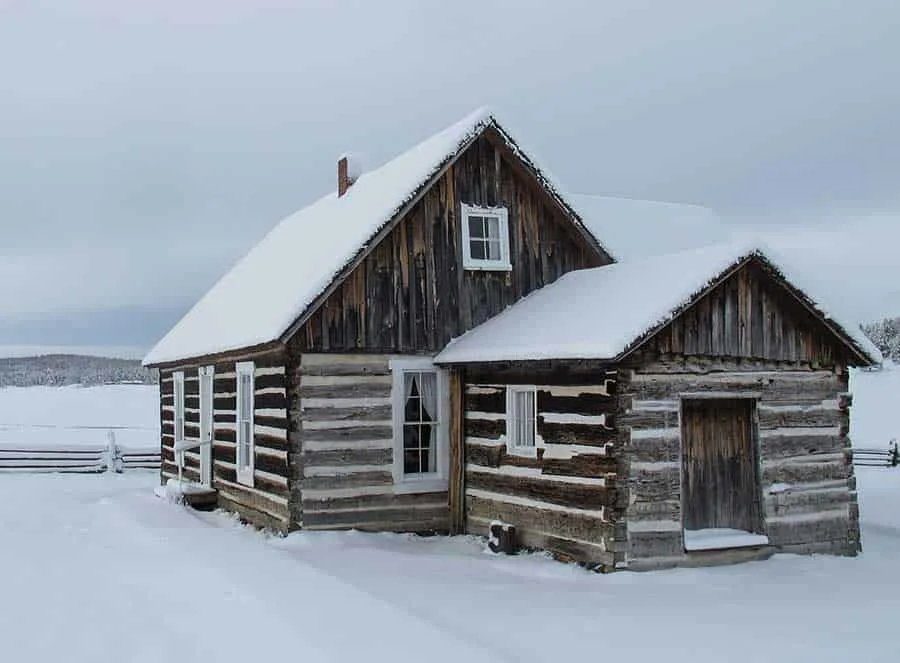
Living off the grid does not necessarily mean going back in time and giving up on the modern world as the Amish do. This has been a general misconception in the mind of the public when one hears that someone is living or going off the grid.
It also does not mean someone is trying to hide from the law or the IRS. If you are reading this article then that means you either are or you are thinking about living off grid. At the very least you want to reduce your carbon footprint or simply be more self-sustaining.
Welcome to the Off Grid World.
To live off the grid you need to address how you will acquire, and more importantly, sustain the four basic needs of life.
Decisions must be made on how you will become a self-sustaining entity.
You will effectively become your own utility providing your own water and energy. Perhaps you may even go as far as to make your own clothes and grow your own food.
Of course, let’s not forget you will need to build your own shelter. A common misconception is that those who live off grid live in shacks. A quick look around OffGridWorld.com will yield numerous adorable homes to inspire you.
If you are ready to take yourself off the grid, you’ll want to prioritize the steps to get there. Below you will find a suggested priority list. It is by no means a set guide and what we feel is a priority may not be a priority for you, or you may have already overcome it.

1. SHELTER
Without shelter, you cannot sustain the other three necessities of life effectively, so this should be your first order of business.
Determining the type of shelter you need is predicated on who is going to be living there. If it is just you, then things are much more simple, however, if you are planning to move an entire family off grid then you will want to consider their needs as well. There there are many, many options for off grid homes.
Ask people the minimum number of square feet you will need per person and you will get some varied answers. Ask someone who served in the Navy on a submarine and then ask anyone else and you will get the idea.
As a general rule of thumb, a single person requires about 250 to 300 square feet. Yes, you can reduce that amount but you will find that number is about average.
You will want to add about 100 to 150 square feet for each additional adult, 75 square feet for children ages 3 to 12, and 50 square feet for an infant.
So for a family of 2 adults, one teenager, and a child of say 10, you can estimate a needed area of about 525 to 600 square feet or roughly the size of two 40’ shipping containers. If you are a fan of tiny houses, then this number can be cut in half.
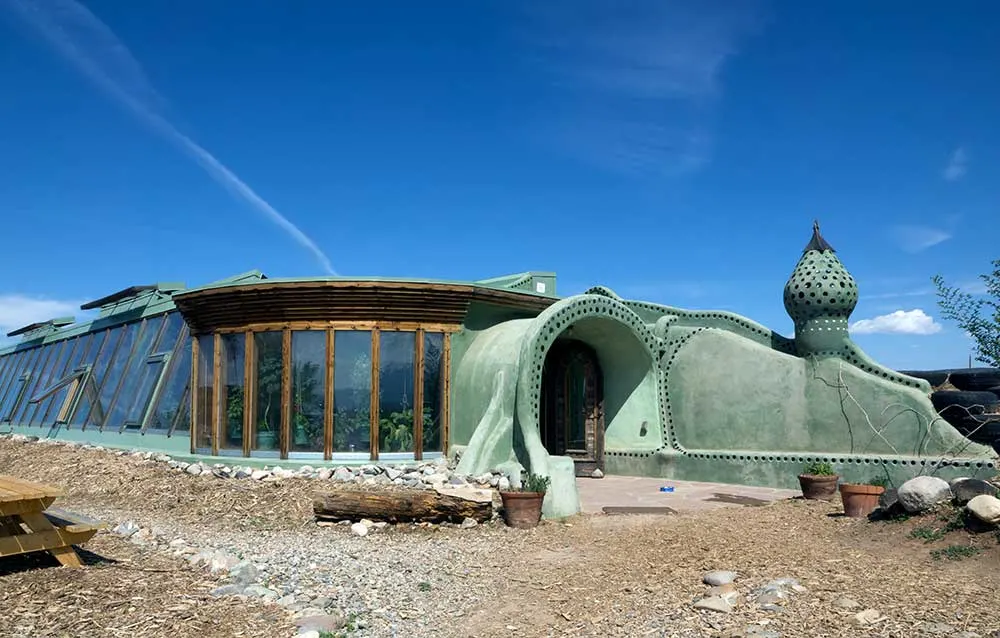
Earthship in NM – IrinaK/Shutterstock
2. WATER
Water and food are really on the same level of necessity but water gets the edge on the priority list. The good thing about water is that it is fairly easy to acquire and store. You also do not have to store it inside the shelter itself so it will not take up precious square footage.
There are many ways to gather water, but first, you must decide the purpose of the water, and then you can decide how much you need and where to store it.
Water to drink and cook with is far different than water needed to grow plants with or even bathe in. A quick search on this site will show many articles on how to build water collectors, purifiers, and even water heaters. One article will even show you how to collect emergency water with nothing more than a plastic bag.
Will you have a well on your property? Do you have a spring or stream nearby?

World Health Organization hierarchy of water needs
How much water will you need? Water needs vary greatly depending on climate, age, activities, and more. The charts above are estimates based on an average family in a normal climate. While living “off the grid” you will undoubtedly be conserving water, which will greatly change these numbers.
3. FOOD
So what is for dinner? Well here, there are so many options to consider that it can be an article itself so we will suggest a few ideas for you to consider depending on the number of people you are trying to sustain.
Hunting is always an option, but for the purpose of this article, we will stick to gardening tips.
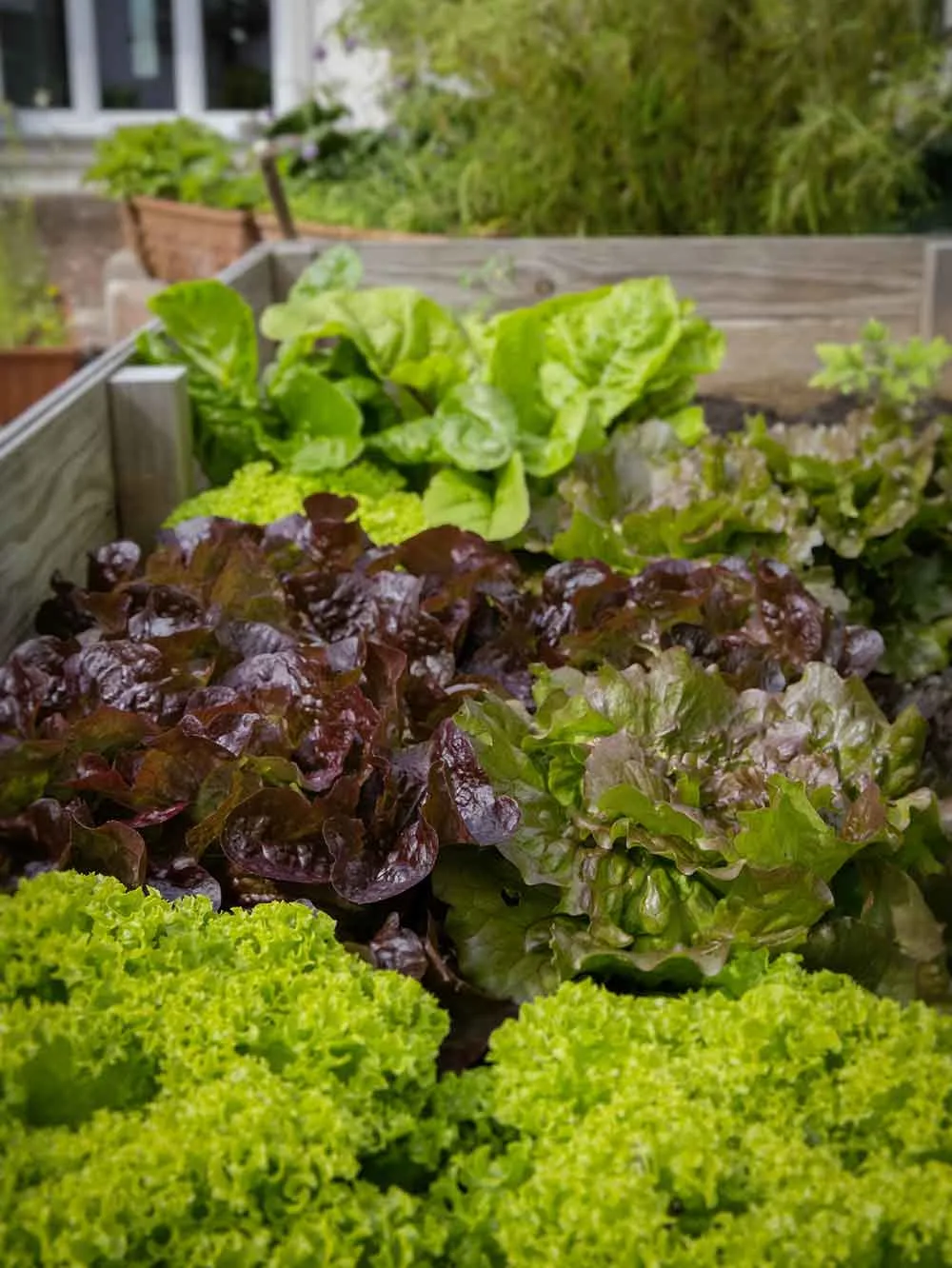
To get higher yields you will want to garden using wide rows. The assumption here is you are in a climate that facilitates a normal vegetable & fruit garden.
It is important to grow what you like to eat, however, you must consider how much room you will need for each type of plant. A good rule of “green” thumb is about 200 square feet per person but if you can get that up to 400 square feet per person you will be living very comfortably off your garden.
Here is a handy chart, based on “per adult”, that will show you some of the most popular plants and how many to grow.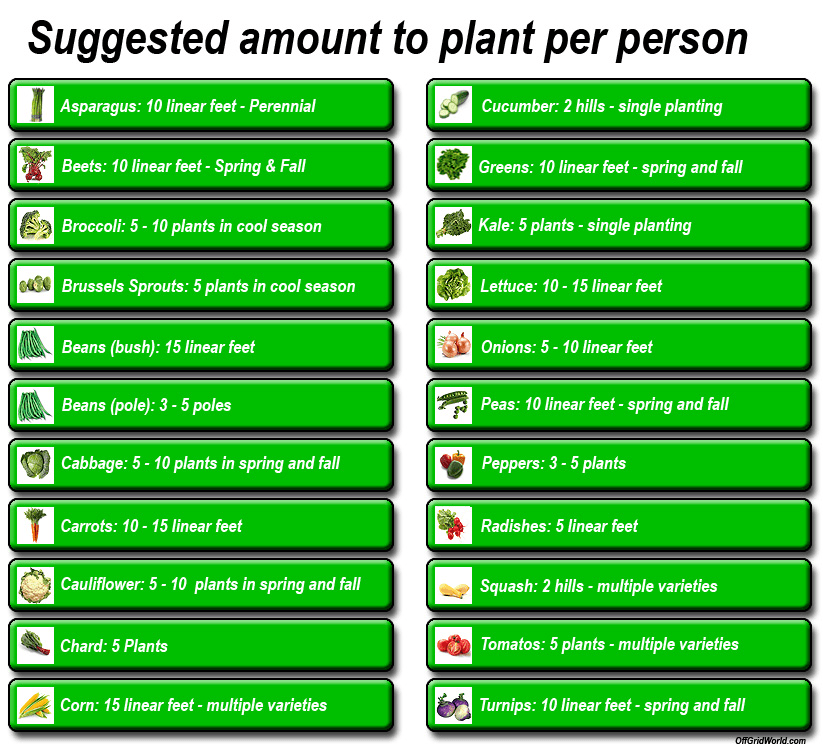
4. CLOTHING
This is the last priority, simply because it is truly a personal decision as to how far to take this living “off the grid” thing. Clothing is a matter of survival, of course, and it is a big factor when choosing to live sustainably.
Having the proper clothing for your climate is essential, but we will also suggest that you take into consideration what your clothes are made of.
The most sustainable materials are cotton and hemp. They are natural and very sturdy, especially when used in denim. Stay away from man-made materials if possible and when practical.
Also, consider making clothes last longer by doing the following. If you have a shirt that is stained, consider dying it using natural coloring. If you have ripped jeans, turn them into “daisy dukes” by cutting them off to make shorts. Got holes? Try patching your clothes using the material you just cut off to make shorts! Need a belt? Go “Jethro Clampett” style and use hemp rope or leather. As you can see, the possibilities are endless.
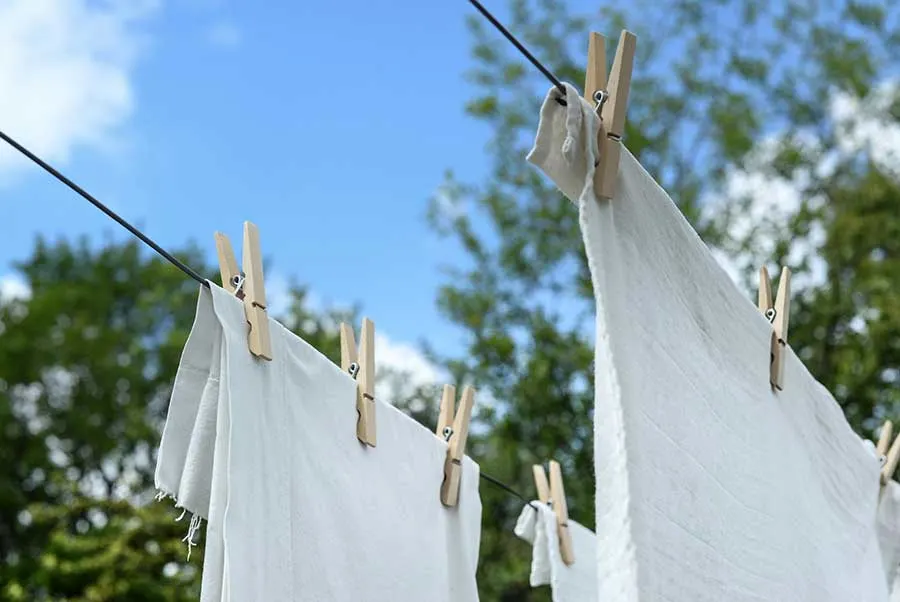
Although electricity, running water, plumbing, and various other things are not necessities of life, one could argue that they have become, at the very least, needs. Living off the grid does not mean living without electricity, television, hot running water, refrigeration, air conditioning, or even the internet.
As we like to say, the idea isn’t just to build a house on a piece of land, but rather a whole system whereby a reasonably sized family can live comfortably, producing their own food, water, and energy enabling them to become self-sufficient.